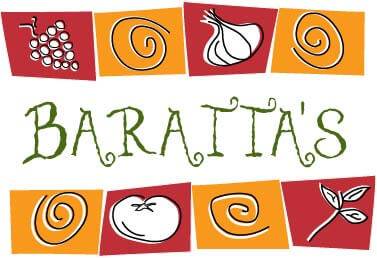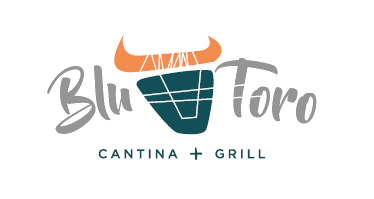Restaurant Playbook
This playbook is provided for cafés and restaurants in Greater Des Moines (DSM).
Sample: Café Risk Profile
The sample risk profile has been determined for cafés in DSM. The profile shows frequency, or how many people in a day; duration, or length of typical interaction; and variety, or the number of different people.*
|

8M workers unemployed
|

$80B in sales lost in April
|

10% permanently closed
|
The restaurant industry is among those that have suffered the most significant sales and job losses since the COVID-19 outbreak began. According to the National Restaurant Association, at the height of the pandemic, 40% of America's restaurants were shuttered and more than 8 million restaurant employees were unemployed. While some restaurants began reopening in May and June, most featured only takeout, delivery or outdoor dining options due to local restrictions. Countless restaurant operators, namely on the full-service and independent side, can’t survive long-term if they’re not above the 50% capacity mark, especially if they don’t offer outdoor dining. The National Restaurant Association reports 2020 industry sales at $659 billion, which was $240 billion below expected levels. The Iowa Restaurant Association reported that over 85% of Iowa restaurants were still operating in the first quarter of 2021.
|

|
Food Safety & Cleanliness
Awareness of health, sanitation and food safety will remain highly important on both sides of the counter, both for the employees and the consumer.
|
|

|
Off-Premise Services
Delivery and curbside pick-up offer convenience and limited consumer-staff interaction. Expect these services to remain a strong component of the business in this new normal.
|
|

|
Contactless Transactions
Awareness and concern over contagion will be a major driver for contactless payment to be fully implemented including smart cards, tap-and-pay and mobile wallets.
|
|

|
Indoor/Outdoor Dining
The need to socially distance has pushed many restaurants to start or expand outdoor eating areas to accommodate customers. With the easing of social distancing regulations and the successes of the COVID-19 vaccine, diners may soon become increasingly comfortable eating indoors again.
|
Health & Sanitation
- Conduct a health screening with all employees before their shifts in accordance with the most up-to-date recommendations from the local public health department.
- Encourage employees who feel sick to stay home. Employees who have had close contact with someone with COVID-19 should consult CDC guidance on when to self-quarantine.
- Face coverings and other PPE should be worn by employees and clients in accordance with the most up-to-date recommendations from the local public health department.
- Clean and disinfect frequently touched surfaces (e.g., door handles, cash registers, workstations, sink handles, bathroom stalls) at least daily, and as much as possible. Clean shared objects (e.g., payment terminals, tables, countertops/bars, receipt trays, condiment holders) between each use.
- Develop a schedule for increased routine cleaning and disinfection.
- Require frequent employee handwashing (e.g. before, during, and after preparing food; after touching garbage) with soap and water for at least 20 seconds and increase monitoring to ensure adherence.
- Ensure gloves are worn by employees when they are completing these activities:
- Removing garbage bags or handling and disposing of trash
- Handling used or dirty food service items
- Cleaning and disinfecting surfaces
- Read and follow the directions on the label to ensure safe and effective use of disinfectant.
- Employees should always wash their hands with soap and water for at least 20 seconds after removing gloves.
- Encourage employees to cover coughs and sneezes with a tissue (or use the inside of their elbow). Used tissues should be thrown in the trash and hands washed immediately with soap and water for at least 20 seconds.
- If soap and water are not readily available for handwashing, use hand sanitizer that contains at least 60% alcohol.
- Employees should avoid touching their eyes, nose and mouth with gloved or unwashed hands.
- Ensure adequate supplies to support healthy hygiene Supplies include soap, hand sanitizer containing at least 60% alcohol (placed on every table, if supplies allow), paper towels, tissues, disinfectant wipes, masks (as feasible) and no-touch/foot pedal trash cans.
- Offer options for employees at higher risk for severe illness (including older adults and people of all ages with certain underlying medical conditions) that limits their exposure risk (e.g., modified job responsibilities such as managing inventory rather than working as a cashier, or managing administrative needs through telework).
- Consistent with applicable law, develop policies to protect the privacy of persons at in accordance with applicable privacy and confidentiality laws and regulations.

Process & Space Modification
- Discourage sharing of items that are difficult to clean, sanitize or disinfect.
- Limit any sharing of food, tools, equipment or supplies by staff members.
- Ensure adequate supplies to minimize sharing of high-touch materials (e.g., serving spoons) to the extent possible; otherwise, limit use of supplies and equipment by one group of workers at a time and clean and disinfect between use.
- Avoid using or sharing items that are reusable, such as menus, condiments and any other food containers. Instead, use disposable or digital menus (menus viewed on cellphones), single serving condiments and no-touch trash cans and doors.
- Use touchless payment options as much as possible, if available. Ask customers and employees to exchange cash or card payments by placing on a receipt tray or on the counter rather than by hand to avoid direct hand-to-hand contact.
- Clean and disinfect frequently touched surfaces such as counters or hard surfaces between use. If pens are needed for some purposes, disinfect between uses and/or encourage customers to use their own pens.
- Use disposable food service items (e.g., utensils, dishes, napkins, tablecloths). If disposable items are not feasible or desirable, ensure that used or dirty non-disposable food service items are handled with gloves and washed, rinsed, and sanitized to meet food safety requirements. Change and launder linen items (e.g., napkins and tablecloths) after each customer or party’s use.
- Avoid use of food and beverage utensils and containers brought in by customers.
- Change restaurant and bar layouts to ensure that all customer parties remain at least six feet apart (e.g., removing tables/stools/chairs, marking tables/stools/chairs that are not for use).
- Limit seating capacity to allow for social distancing.
- Offer drive-through, curbside takeout or delivery options as applicable. Prioritize outdoor seating as much as possible.
- Ask customers to wait in their cars or away from the establishment while waiting to pick up food or when waiting to be seated. Inform customers of food pickup and dining protocols on the business’s website and on posted signs.
- Discourage crowded waiting areas by using phone app, text technology or signs to alert patrons when their table is ready. Avoid using “buzzers” or other shared objects.
- Consider options for dine-in customers to order ahead of time to limit the amount of time spent in the establishment.
- Avoid offering any self-serve food or drink options, such as buffets, salad bars and drink stations. This limits the use of shared serving utensils, handles, buttons or touchscreens and helps customers to stay seated and at least six feet apart from people who do not live in their household.
- Install physical barriers, such as sneeze guards and partitions, particularly in areas where it is difficult for individuals to remain at least six feet apart. Barriers can be useful in restaurant kitchens and at cash registers, host stands or food pickup areas where maintaining physical distance of at least six feet is difficult.
- Provide physical guides, such as tape on floors or sidewalks and signage, to ensure that individuals remain at least six feet apart. Consider providing these guides where lines form, in the kitchen and at the bar.
- Close shared spaces such as break rooms, if possible; otherwise stagger use, require mask use and clean and disinfect between use.
- Designate a staff person for each shift to be responsible for responding to COVID-19 concerns. All staff members should know who this person is and how to contact them.
- Ensure that ventilation systems operate properly and increase circulation of outdoor air as much as possible, for example by opening windows and doors and prioritizing outdoor seating. Do not open windows and doors if doing so poses a safety or health risk to customers or employees (e.g., risk of falling or triggering asthma symptoms).
- Consider improving the engineering controls using the building ventilation system. Consult with experienced heating, ventilating, and air-conditioning (HVAC) professionals when considering changes to HVAC systems and equipment.
- Inspect filter housing and racks to ensure appropriate filter fit and check for ways to minimize filter bypass.
- Check filters to ensure they are within service life and appropriately installed.
- Consider running the HVAC system at maximum outside airflow for 2 hours before and after occupied times.
- To minimize the risk of Legionnaires’ disease and other diseases associated with water, take steps to ensure that all water systems and features (e.g., sink faucets, decorative fountains, drinking fountains) are safe to use if there has been prolonged facility shutdown.

Communication
- Post signage in highly visible locations that promote everyday protective measures and describe how to stop the spread of germs by properly washing hands and properly wearing a cloth face covering.
- Inform customers of food pickup, dining protocols and additional safety measures on the business’ website, social media and on posted signs.
- Post signage at the entrance that states that no one with a fever or symptoms of COVID-19 is to be permitted in the restaurant.
- Designate a staff person for each shift to be responsible for responding to COVID-19 concerns. All staff members should know who this person is and how to contact them.

|

|
Local Restaurants
Seek out and take any opportunity you can find to partner with a local restaurant: share kitchen space, resources, staff, supplies, etc. There are no restaurant competitors right now, only partners in weathering the storm.
|
|

|
Grocers
Connect with local grocers to see if there is an opportunity to sell restaurant menu items within grocery stores. Proceeds from ready-made meals will go directly back to the restaurant.
|
|

|
Feeding the Community
Offer customers the option to donate towards meals for the community. Fong's Pizza set up a fundraiser to spread kindness through Pizza Ninja Visits to front line workers, retirement communities and other vulnerable populations.
|
|

|
Baratta's Restaurant served 300 family meals, each capable of feeding four to six people, to families on Des Moines' south side. The 48-year-old restaurant teamed up with the Elder Corporation, an excavation company in Pleasant Hill, to donate the meals.
|
|

|
In an effort to combat hunger in the community during this difficult time, Dark Side of the Spoon Hospitality Group is working with the Food Bank of Iowa to donate a meal for a family of four for every to-go order sold at one of their restaurants. Blu Toro Cantina + Grill, Wellman's Pub & Rooftop, Wellman's Pub Ingersoll, 1908 Draught House (Waukee, West Des Moines, Johnston, Downtown and Norwalk) are participating.
|
|

|
Delivery Services
As restaurants pivot to delivery, curbside pick-up or take-out only operations, third-party marketplaces like DoorDash, Grubhub, and Uber Eats, have adjusted delivery fee and commission models for independent restaurants.
|
Recommended Playbooks
The business function playbooks include takeaways that are specific to professional functions that could be present in any business, regardless of industry.
*We note that these assessments are qualitative and based on expert-led judgment (Johns Hopkins, 2020). Currently, there are not enough detailed data available to enable quantitative risk stratification. Businesses will need to make decisions about re-initiating business activities before there are validated data to know the precise levels of risk.
Legal Disclaimer
The Greater Des Moines Partnership's DSM Forward playbook is
not intended to constitute legal advice or provide specific direction. The preparation of a business continuity or preparations plan should be undertaken with the advice and direction of appropriate specialists and personnel, in consideration of the unique circumstances impacting each business. Third-party websites or material linked to or referenced in DSM Forward are for informational purposes only and do not constitute a recommendation of The Partnership of that material or its authors.
Last updated: 5/8/2020